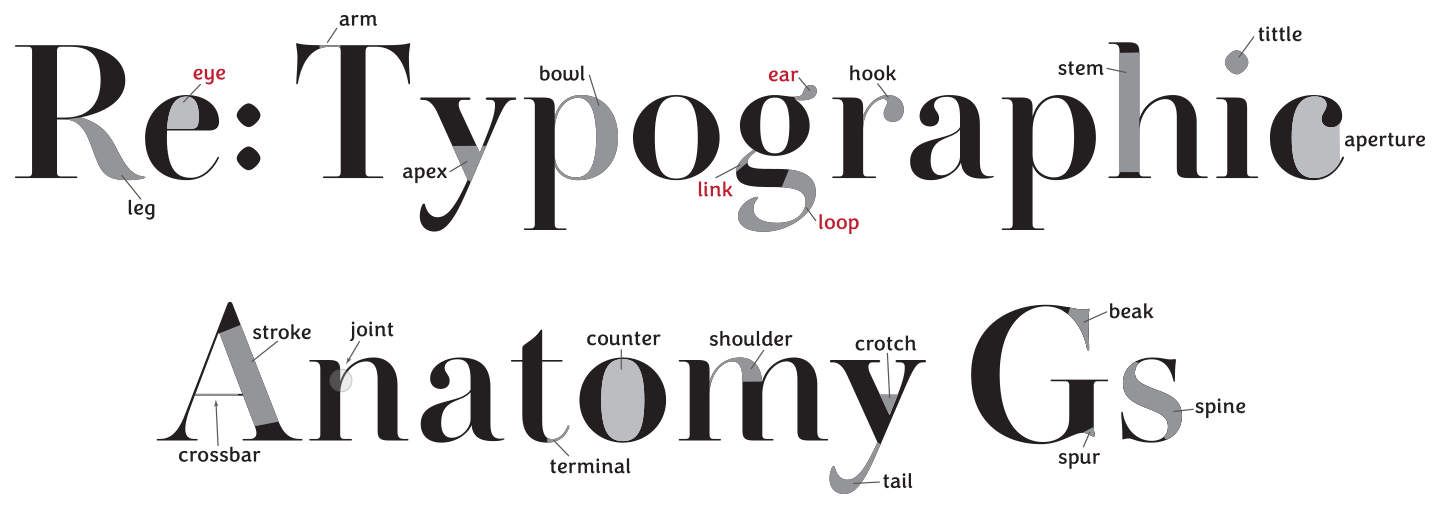
Type Anatomy
Having a set vocabulary of terms makes it easier to discuss type and lettering. Otherwise, the conversation can get kinda confusing. For example, “You know, that little curly thingy that sits on the top right part of the lowercase g?” Um... what? Let's replace that with, “the ear of the g.” Much better—now we're talking!
This is by no means the definitive guide of type anatomy, but well... it's my guide :) And, it can be yours too; to print out, use in a class, or give it to a friend so you can have a meaningful discuss about that letter g. Here's the PDF :)

NOTES
The eye of the e, the ear, link and loop of the g (marked in red) are unique terms to those specific characters and not used elsewhere
The following terms are sometimes used to describe the same element:
Bowl/Lobe • Finial/Terminal • Apex/Vertex • Stroke/Diagonal Stem
Aperture vs. Counter: an aperture denotes the opening to a mostly enclosed space in a character, a counter is a fully enclosed space in a character
Shoulder vs. Hook: a shoulder leads into a stem, a hook leads into a terminal or beak
WANT MORE?
Here are some links to information about the anatomy of letter forms, both in the Latin alphabet and in other writing systems.
Typedia Anatomy of a Typeface
Fontsmith The A-z of Typographic Terms
Marc Schenker The Only Font Anatomy Design Guide You’ll Ever Need
Basic explanation of the parts of Latin letters, with individual illustrations.
Ilene Strizver Anatomy of a Character
Definitions of terms for describing Latin letter forms, by the former typographic director of ITC.
Orana Velarde A Visual Guide to the Anatomy of Typography
Elements of Latin letters, also type styles & spacing
Azza Alameddine Arabic Type Anatomy
Well-illustrated article on type design in the Arabic script.
29LT Blog Arabic Type Anatomy & Typographic Terms
Pooja Saxena Devanagari Type Anatomy
Well-illustrated article on type design in the Devanagari script used for several languages in India.